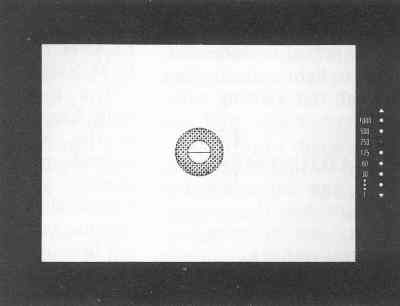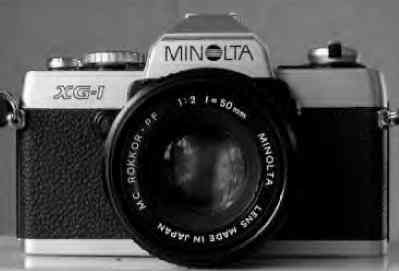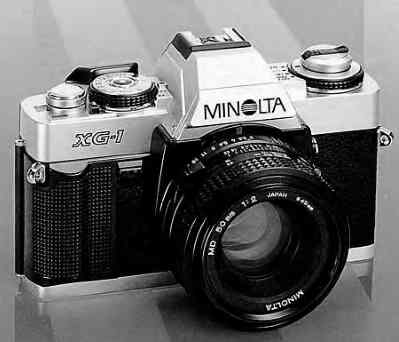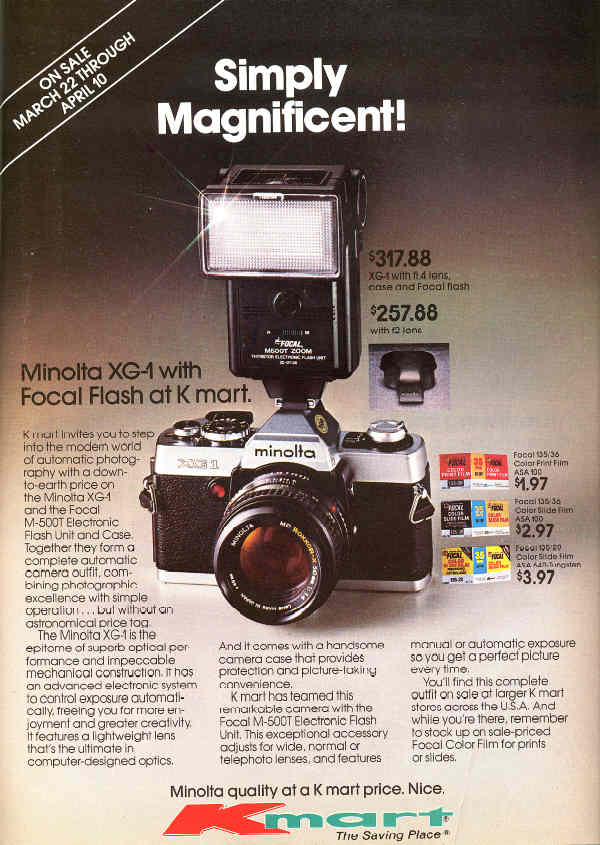

XG-1
(1978) A year after the introduction of the XG-7, Minolta
began to expand on the basic camera. The XG-1 was essentially the same
camera as the XG-7, but with a couple of minor feature
changes. Most importantly, it had a simpler LED display in the viewfinder.
The speeds from 1/15 through 1 second were grouped together, and
represented by a single LED. It's hard to imagine that this would have
saved much in production cost, but it did make sense to merge these speeds.
These are, after all, the speeds when you would need a tripod -- an
area that a neophyte amateur would be best to avoid. This is the area
where newcomers are likely to get blurred pictures. By discouraging
use of this area, Minolta might be helping budding photographers get sharper
results. These speeds are still completely usable, but are not individually
displayed in the viewfinder.

The LED scale of the XG-1 was changed in other ways as well. Unlike the XG-7, which has an XE-7 type scale made up of black numbers on a clear background, the XG-1 has an XD-11 type scale, made up of clear numbers on a black background. But the scale in the XG-1 isn't exactly like that of the XD-11. First, the shutter speeds are to the left of the LED column (in the XD-11, they are on the right), and the scale does not protrude into the picture area, as it does on the XD-11. Functionally, the two are the same, but each has its proponents. Much of your preference has to do with what cameras you have used in the past.
The other changes to the XG-1 were made in the film door. First, the door is now permanently attached, meaning that the Databack G cannot be used. In addition, the film tab holder was dropped, although the ISO/DIN converter was not. Minolta could have dropped more significant features, such as the film advance indicator and the winder option, and reduced the price of the XG-1 significantly. Instead the few changes that they made only dropped the price of the XG-1 a little. So overall, the basic features are the same between the XG-1 and the XG-7, but there were actually three versions of the XG-1, varying over time.



The XG-1 was a slightly simpler version of the XG-7. At the same time that Minolta produced the XG-1, they produced the XG-SE which is a slightly more advanced version of the XG-7. This was the beginning of the divergence in the XG line of cameras. It would continue to diverge even more.
The XG-1 helped Minolta expand it's market by producing a simple, automatic, inexpensive, but high-quality SLR camera with interchangeable lenses. But Minolta didn't stop there. They realized that they could make the XG-1 even simpler and less expensive and developed the XG-A. This camera was basically an XG-1 without the option of manual exposure control. For a comparative look at the major features of the XG-1 models, check out MINMAN's SLR table -- the world's most complete!

RETURN TO THE MANUAL
MINOLTA HOME PAGE We didin't want to do this, but since other websites
have been stealing our stuff, we have no alternative but to state:
COPYRIGHT@1995-2023 by
Joe McGloin.
All Rights Reserved. The material on this website is protected by US Federal
copyright laws. It cannot be copied or used in any manner without specific
approval from the owner.
The material on this website is protected by US Federal copyright laws. It cannot be copied or used in any manner without specific approval from the owner.